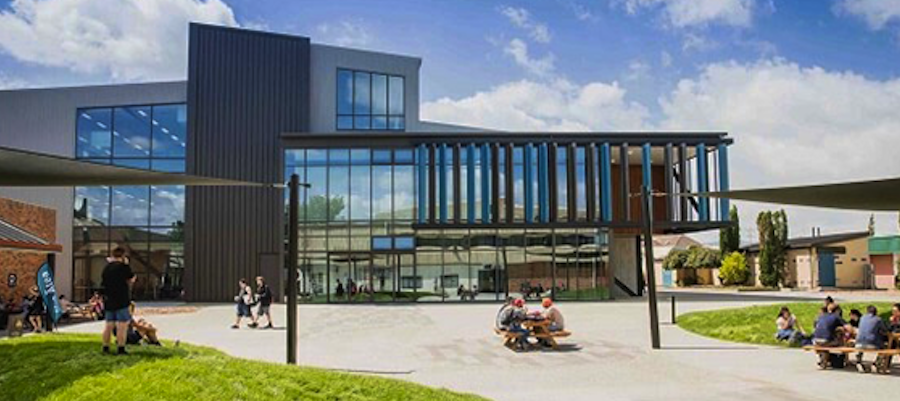Education Minister Chris Hipkins’ radical proposal in February to reform what he described as a “broken” polytechnic and industry training sector has evoked a strong response, largely split between the two major sectors involved.
And it drew criticism – as consultation closed in late March – that the seven weeks given had not been enough to fully discuss Hipkins’ wide-ranging Reform of Vocational Education (ROVE), which proposes merging all 16 New Zealand polytechnics into a single entity.
The kicker for some of the major industry training organisations (ITOs), which have called it “non-negotiable”, is that they seem potentially likely to shed staff and a major part of their training role under ROVE.
A major concern for the Bay of Plenty is the possibility that policy will be set from a centralised body that won’t recognise unique regional strengths. In particular, that includes the close collaboration already established by Toi Ohomai Institute of Technology and the University of Waikato under the Bay of Plenty’s Tertiary Education Partnership.
According to figures provided by Toi Ohomai chief executive Leon Fourie, the ITOs handle around 145,000 learners. By comparison the 16 polys currently accounted for around 110,000 learners and their share of the sector was shrinking.
In part that was because the generally buoyant economy had encouraged people to go straight from school to work, he said, and created increased competition between polys and ITOs for students.

The poly sector as a whole lost $53 million in 2017, and four polytechnics – Greymouth’s Tai Poutini Polytechnic, Wellington’s Whitireia and WelTec, and Unitec in Auckland – together received $100 million in Crown bailouts last year. By late 2018, all polytechnics’ finances were worse than forecast.
Dr Fourie told the Bay of Plenty Business News he was generally supportive of the proposals, especially around equalising the funding model. (generally the polys are funded at a higher level than ITOs, because they provide a bigger suite of service support).
In the poly’s official statement, Dr Fourie said that while Toi Ohomai supported the three main proposals (below) in principle, a key outcome would be the detail around regional autonomy.
“We’re committed to improved regional outcomes that benefit our learners, our industries and our communities and want to make absolutely sure a new system is flexible and agile enough to respond quickly to regional needs,” he said. “That will require an appropriate balance of central and regional decision-making.”
Other key themes in Toi Ohomai’s submission included the need to protect the development of specialised regional niche areas, the growth of regional partnerships and relationships, the future role of iwi as partner, and the impact of potential changes on staff morale and retention.
“We believe the proposal to merge all 16 ITPs (Institutes of Technology and Polytechnics) under a single entity is a big call with significant implications for our sector,” said Dr Fourie.
Maintaining regional alignment
Priority One chief operating officer Greg Simmonds – who has served for some years as the lead for BOP Tertiary Partnership collaborations between Toi Ohomai, the University of Waikato and Te Wananga, as well as the BOP Tertiary Intentions Strategy – said he was supportive of the government’s intentions.

“Certainly things like addressing the funding model will make it easier for business to have more engagement,” said Simmonds.
“The key thing we would be cautious of is a move to create one national entity and the implications of that for regional tertiary development.
We would feel that particularly in the Bay of Plenty, where the Tertiary Partnership has made a lot of progress in terms of alignment with regional business and community needs, and also collaboration between the likes of the university and the Toi Ohomai. We don’t want to see all that progress lost.”
Warwick Quinn, chief executive of leading building and construction organisation BCITO, said the biggest issue ITOs were grappling with as they awaited clarity on government thinking was the issue of moving training away from ITOs.
“I don’t think anybody has a clear steer on which way the government will go or what decision they will make,” he told Bay of Plenty Business News in April, though he anticipated government would move quite quickly on the issue.
In its formal submission to government, BCITO made it clear that the loss of the arranging training role of ITOs was a deal-breaker regardless of potential gains, and on balance it could not support the full ROVE suite of reform proposals.
The building industry ITO saw some positives in the proposals, including the establishment of a better and fairer funding system, but did not believe they were sufficient to balance the value of what they were being asked to give up in terms of industry control and training delivery.
Two-thirds of attendees at a recent BCITO summit to consider ROVE did not support the government’s proposals and had concerns around the negative impact such widespread changes would have on the sector, at a time when it needed to build more capacity and capability.
“We understand what the new proposals are trying to do, but we are concerned that they may not get there. It is a lot of disruption on a promise that lacks detail,” Quinn said after the summit.
He told Bay of Plenty Business News this month that BCITO had always been work-based.
“There’s no doubt that at a sector or industry-wide level, having a strong relationship with local providers is really important,” he said.
“What’s really important is that it’s not about patch protection, it’s about making sure the employers and the learners get the best possible experience and it works for them.”
Major policy shift
Janet Lane, chief executive of MITO, which designs qualifications and training programmes to meet the needs of the automotive, transport, logistics, industrial textile fabrication and extractive industries, says ROVE represents the largest shift in New Zealand’s tertiary education and training system in more than 25 years.
MITO’s submission to government strongly disagreed that the entire vocational education sector needed radical change. The ITO supported the intent of the proposal to ensure clear and complementary roles, better links and pathways and increased collaboration and co-operation across the sector.
It considered the financial stabilisation of publicly funded vocational education providers was the most urgent priority. It also supported the proposal to create a unified vocational education funding system.
“We do not support transferring responsibility for workforce training and apprenticeships to vocational education providers,” said Lane.
Potential problems of centralisation
National tertiary education spokesman Shane Reti has said regions would suffer under a single polytechnic structure.

“Businesses and the regions know what demand there is for skills in their own backyard. But this government wants all of the decision making to be done by a centralised body in Wellington,” he said.
Alister Jones, senior deputy vice-chancellor at the University of Waikato, told Bay of Plenty Business News he thought that overall the sector needed reform.
“I think there needs to be a very close look at the relationship between the polytechnic sector and the training sector,” he said.
“We recognise the need for change in both to improve its ongoing sustainability.
“We support the concept of centres of vocational excellence and we think they can be really strongly regional and industry focused.
Having greater clarity around what is meant by vocational training will help.”
However, Jones said, merging the polytechnics into one centralised management body posed the potential risk of missing the strengths of existing partnerships, particularly that between the University of Waikato and Toi Ohomai where there was a strong history and relationship.
“What that partnership would look like under the government reforms is not clear.”
















